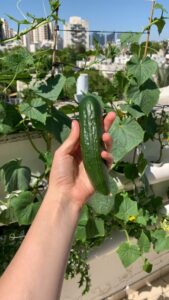As hydroponic gardening gains popularity, more and more growers are turning to rockwool as their go-to growing medium. Known for its excellent water retention, pH neutrality, sterility, and versatility, rockwool provides the optimal environment for plant roots to thrive. However, to harness its full potential and ensure long-term success, proper maintenance of rockwool is crucial. Here’s a deeper look at what rockwool is and practical solutions on properly maintaining it to maximize plant health, productivity, and overall yield.

What is Rockwool?
Rockwool, also known as mineral or stone wool, is a type of horticultural growing medium made from basalt rock and chalk. These materials are melted together at a high temperature and then spun into fibers, which are then compressed to form blocks, slabs, or cubes. The resulting product is lightweight, porous, and excellent at retaining both water and air.

Why is Rockwool Popular in Hydroponic Gardening?
Rockwool’s popularity in hydroponic gardening can be attributed to its unique properties. Its fibrous nature allows for superior aeration, ensuring plant roots receive plenty of oxygen. At the same time, it can retain an optimal amount of water, providing a consistent supply of moisture and nutrients to the plants.
Rockwool is also versatile and can be used in various hydroponic systems. It comes in different forms, such as cubes and slabs, making it suitable for seed starting, cuttings, and growing large plants. Lastly, rockwool can be reused for multiple growing cycles, making it a cost-effective option for commercial growers. After harvest, the used rockwool material can be cleaned and sterilized for future use, reducing waste and expenses.
Benefits And Drawbacks Of Using Rockwool As Your Potting Soil
Here are some pros and cons of using Rockwool in hydroponic systems:
Pros
- Excellent Water Retention: Rockwool has an excellent water-holding capacity due to its fibrous and porous structure. It can absorb up to 80% of its volume in water, ensuring plants have a consistent moisture supply.
- Good Air Porosity: Despite its ability to hold water, Rockwool also provides good aeration. Its structure allows for about 20% air space, ensuring roots access sufficient oxygen, which is crucial for plant health.
- Sterility: Rockwool is sterile, meaning it’s free from diseases, pests, and weed seeds. This characteristic provides a clean, safe, and controlled environment for plant growth, minimizing the risk of infections and allowing for healthier plants.
- Stability and Support: Rockwool maintains its physical structure over time and doesn’t break down or decompose. This gives plants a stable support system throughout their growth cycle.
- Versatility: It’s suitable for different types of plants and hydroponic systems. It can be used for starting seeds, rooting cuttings, or growing larger plants.
- Insulation: Rockwool is a great insulation material and can help moderate temperature fluctuations within the root zone, protecting plants from sudden temperature changes.
Cons
- pH Adjustment Needed: Rockwool is naturally alkaline, so it needs to be conditioned with slightly acidic water before use to bring the pH level down to an optimal range for most plants.
- Overwatering Risk: Because of its high water retention, there’s a risk of overwatering, which could lead to root rot if not properly managed.
- Non-Biodegradable: Rockwool is not biodegradable and can contribute to environmental waste if not reused or recycled properly.
- Irritant: Rockwool’s small fibers can irritate the skin and lungs, so wearing protective gear is recommended when handling it.
- Cost: Rockwool tends to be more expensive than some other growing media like peat moss or coconut coir.
How to Maintain Rockwool
Maintaining rockwool is essential to ensure its longevity and effectiveness throughout the entire crop cycle. Here are the steps for maintaining rockwool in hydroponic gardening.
Choose the right size and type of rockwool for your plants
Rockwool comes in different shapes and sizes, such as cubes, slabs, blocks, and granules. Depending on your hydroponic system and the type of plants you are growing, you may need to choose a specific size and type of rockwool that suits your needs. For example, if you are growing seedlings or cuttings, you may want to use small rockwool cubes that can fit in a tray or a net pot. If you are growing larger plants, you may want to use bigger rockwool slabs or blocks that can support their roots and stems.

Soak and condition the rockwool before planting
Rockwool has a naturally high pH level, which can affect the availability of nutrients for your plants. To lower the pH level and make it more suitable for plant growth, you need to soak and condition the rockwool before planting. To do this, fill a bucket with water and add some pH down solution or vinegar until the water reaches a pH level of 5.5. Then, soak the rockwool in the water for at least 24 hours, changing the water every 8 hours. This will help remove any dust, salts, or alkaline substances from the rockwool and make it more acidic.

Properly water the growing medium
Rockwool can retain a lot of water but can also dry out quickly if not watered properly. To avoid overwatering or underwatering your plants, you need to monitor the moisture level of the rockwool and water it accordingly. You can use a moisture meter or a weight scale to check how wet or dry the rockwool is. You can also lift the rockwool cubes or slabs and feel their weight by hand. A good rule of thumb is to water the rockwool when it feels light and dry, but not when it feels heavy and wet. Allow the Rockwool to dry out slightly between watering to ensure there is enough oxygen for the roots.
Feed your plants the right nutrient solution regularly
Besides water, you also need to provide your plants with a well-balanced nutrient mix. You can either mix your own nutrient solution using water-soluble fertilizers or buy a ready-made one from a hydroponic store. You need to adjust the pH level of the nutrient solution to match the pH level of the rockwool, which is usually around 5.5 to 6.5. You also need to adjust the electrical conductivity (EC) of the nutrient solution to match the needs of your plants, which is usually around 1.0 to 2.0 mS/cm for most plants.
Monitor the pH Levels
Rockwool tends to naturally drift towards being alkaline, so regular monitoring of pH levels is crucial. Aim to maintain a pH level between 5.5 and 6.5. If the pH gets too high, you can lower it using a pH-down product.

Keep your rockwool clean and pest-free
Rockwool can attract mold, algae, insects, and other pests if not kept clean and pest-free. To prevent these problems, keep your rockwool away from direct sunlight, excess moisture, dirt, and debris. You can also cover your rockwool with plastic film or mulch to prevent algae growth and evaporation.
If you notice any signs of mold, algae, insects, or other pests on your rockwool, you need to act quickly and remove them before they spread and damage your plants. You can use a mild bleach solution or hydrogen peroxide to disinfect your rockwool and kill pathogens or pests.
Repair damaged rockwool
If you find any damaged rockwool, you should remove and dispose of it safely and properly. You should wear protective gear such as gloves, goggles, and masks to avoid skin contact or inhalation of rockwool fibers. You should also seal any plastic bags or containers that contain rockwool waste and dispose of them according to local regulations. When choosing and installing new rockwool, you should match the type, thickness, and density of the existing rockwool to ensure a consistent insulation level. You should also seal any gaps or cracks around the rockwool with caulk, foam, or tape to prevent air leakage and heat loss.
Replace your rockwool periodically
Rockwool is not biodegradable and cannot be reused indefinitely. Over time, it will lose its structure and effectiveness. To avoid this problem, you need to replace your rockwool periodically, depending on how often you use it and how well you maintain it. A general guideline is to replace your rockwool every 6 to 12 months or whenever you notice a decline in plant growth or health.
Following these steps, you can properly maintain rockwool and enjoy the benefits of hydroponic gardening.
Common Rockwool Issues and How to Solve Them
You may encounter some common issues when using Rockwool as a growing medium. Here are a few potential problems and practical solutions to prevent or solve them:

pH Imbalance
Rockwool’s pH can become imbalanced, affecting nutrient uptake by plants.
Solution: Regularly monitor the pH of the nutrient solution and adjust it as needed using a pH solution to raise and lower the ph levels. Test and adjust the pH of the water draining from the rockwool to ensure it remains within the desired range.
Nutrient Imbalances
Improper nutrient levels can lead to nutrient deficiencies or toxicities in plants.
Solution: Monitor and maintain the nutrient solution’s EC (electrical conductivity) and nutrient levels according to the specific requirements of your crop. Follow the manufacturer’s instructions for nutrient solution preparation and dosage recommendations. Regularly test the nutrient solution and adjust as necessary.
Overwatering
Excessive watering can lead to waterlogged rockwool and oxygen deprivation for the roots.
Solution: Monitor the moisture levels in the rockwool regularly. Allow the medium to dry out slightly between waterings to ensure adequate oxygenation for the roots. Adjust the watering frequency accordingly.
Poor Drainage
Insufficient drainage can lead to stagnant water and root rot.
Solution: Ensure that your hydroponic system has proper drainage mechanisms in place. Use trays, channels, or other systems to effectively drain excess water from the rockwool. Avoid overwatering to prevent water from accumulating in the growing medium.

Algae and Fungal Growth
Moist rockwool can encourage the growth of algae and fungi, affecting plant health.
Solution: Maintain proper airflow and ventilation in the growing area to reduce humidity levels. Shield the rockwool from excessive light exposure by using light-reflective material or covers. Regularly inspect the rockwool for signs of algae or fungi and address them promptly with appropriate treatments or adjustments.
Pest Infestations
Pests such as fungus gnats, mites, or aphids can infest rockwool.
Solution: Practice good hygiene and cleanliness in your growing environment. Monitor for signs of pests regularly and implement appropriate pest control measures such as sticky traps, beneficial insects, or organic pest management techniques. Avoid introducing pests through contaminated water, equipment, or plant material.
Mineral Salt Buildup
Over time, mineral salts can accumulate in the rockwool, affecting nutrient availability and pH balance.
Solution: Periodically flush the rockwool with pH-balanced plain water to remove excess salts and restore pH balance. Follow the manufacturer’s recommendations for flushing frequency and duration.
Insufficient Aeration
Inadequate airflow can lead to poor oxygenation of the roots and an increased risk of root diseases.
Solution: Ensure proper ventilation and aeration in the growing area. Use fans, air stones, or other oxygenation techniques to promote airflow around the rockwool and prevent stagnant conditions. Regularly inspect the root zone for signs of poor aeration and take corrective actions as necessary.
By being aware of these common issues and implementing preventive measures or appropriate solutions, you can maximize the effectiveness of rockwool and maintain healthy plant growth in your hydroponic system.
Conclusion
Whether you’re growing vibrant vegetables, aromatic herbs, or stunning flowers, rockwool is a great growing medium to use. If you master the art of rockwool maintenance, you are empowered to achieve consistent, healthy growth and abundant harvests that will elevate your hydroponic gardening to new heights.






